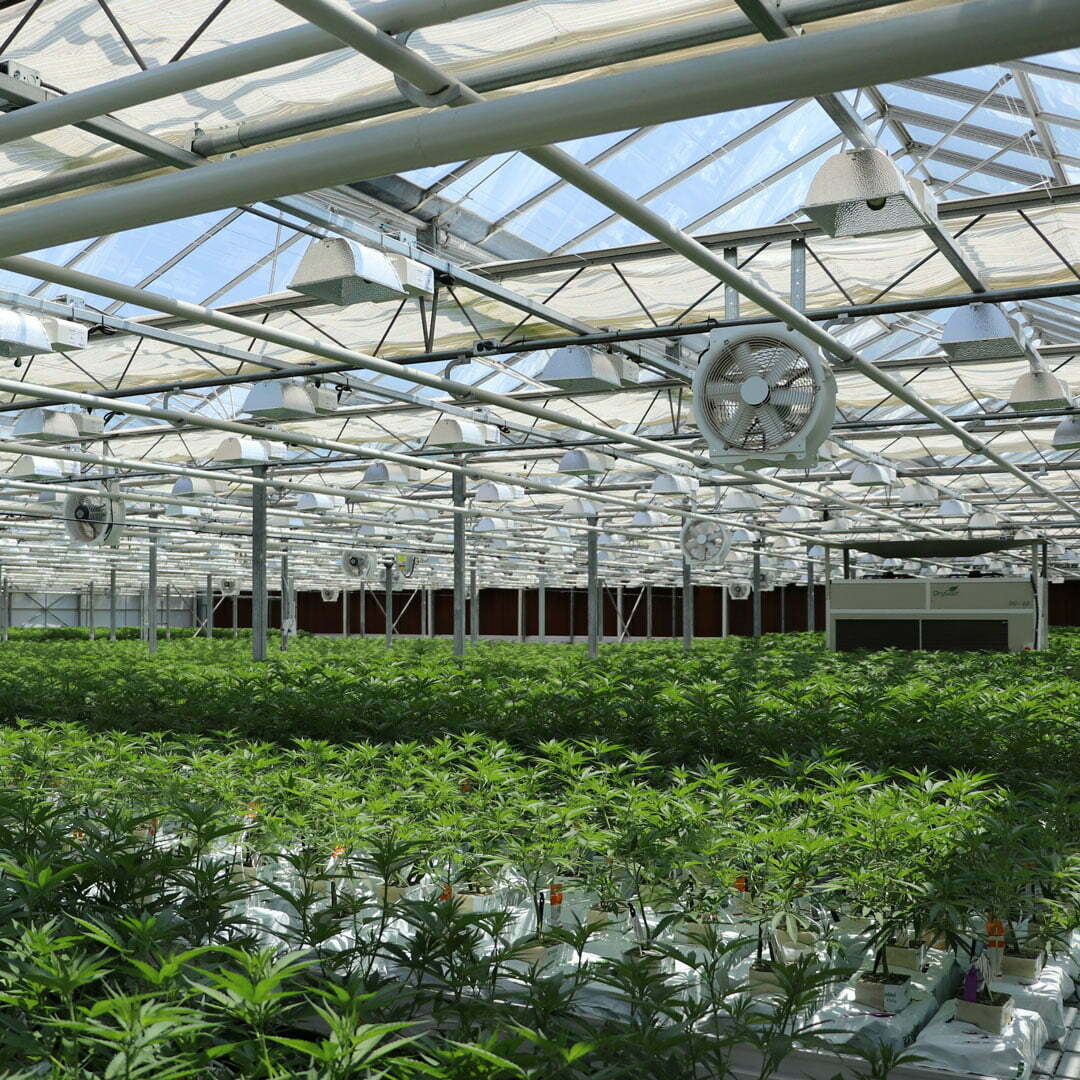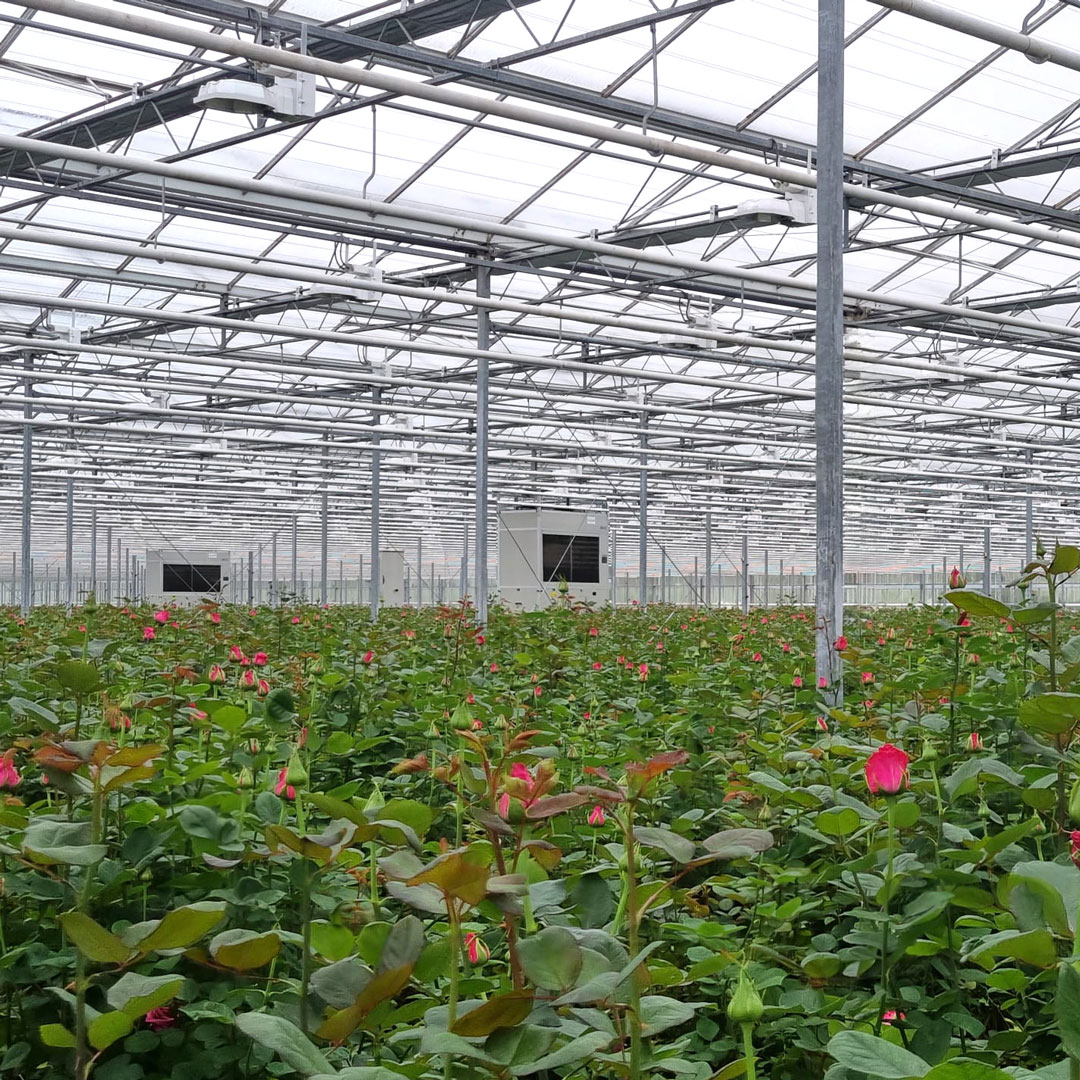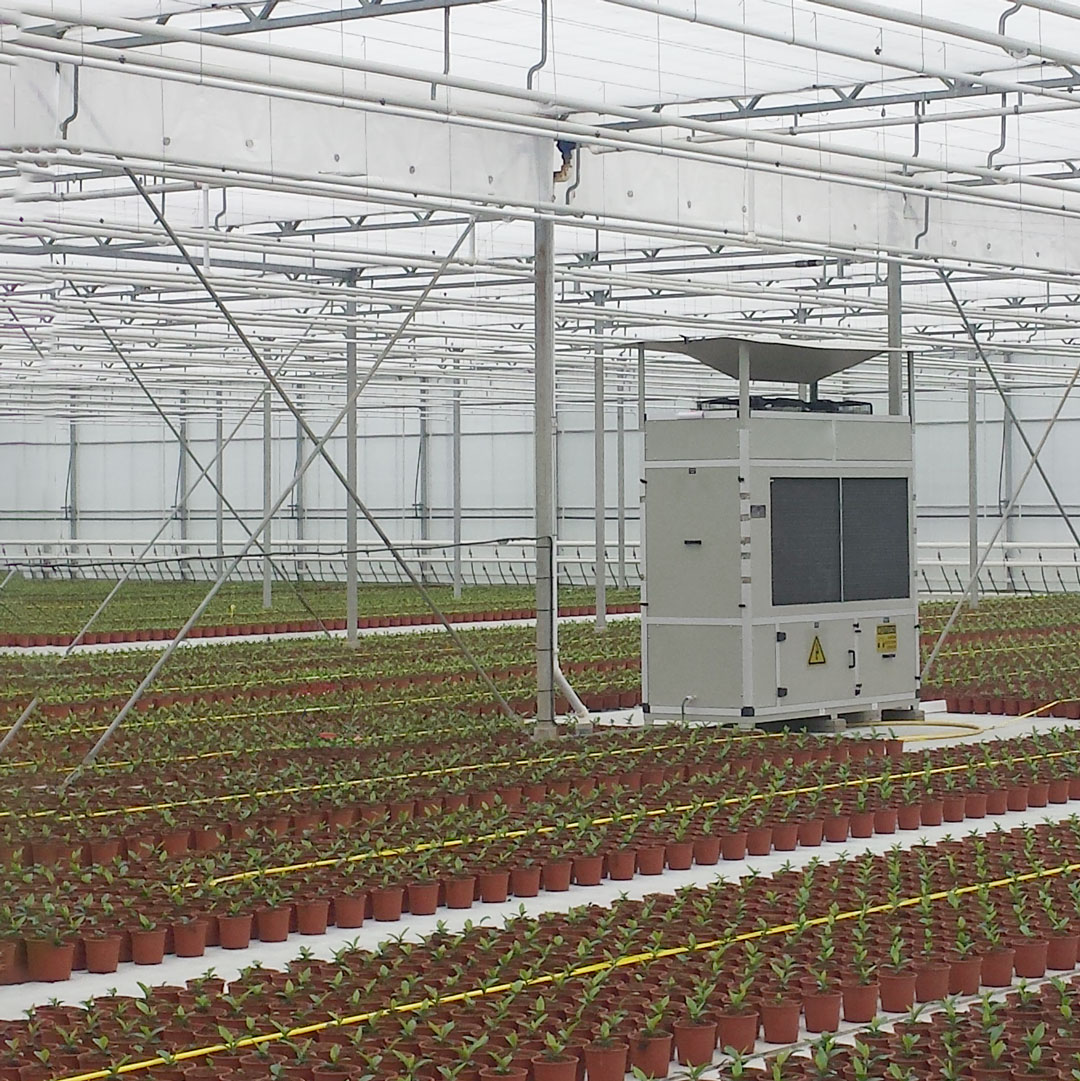How to Design a Commercial Grow Room – Indoor Growing Guide
Indoor growing has major benefits when compared to other controlled environment agriculture techniques, such as greenhouses or glasshouses. They’re completely sealed off, so growers can control every aspect of their environment, to a much a higher degree.
However, grow rooms are often more expensive to build and operate. The expenses differ among types of grow rooms – grow tent systems, grow kits, commercial grow rooms, etc.
This guide will focus on designing a commercial grow room fit for large-scale cannabis cultivation, or any other plants you want to grow indoors.
We will break down the different aspects of climate control and detail the steps necessary to achieve ideal growing conditions. These guidelines are compatible with most indoor gardening techniques, including vertical, hydroponics, pots, SCROG, and more.
Lighting a Commercial Grow Room
The first, most basic step necessary before you can start growing indoors, is to achieve the right lighting. Before we dive into different types of lights, it’s important to discuss light proofing.
Cannabis is a photoperiod plant, meaning light affects its stages of development. To have complete control over your plants’ development and growth, you need to be able to control the lighting. That means avoiding light leaks from outside of the grow room. Alternatively, you can choose autoflowering strains, also known as day neutral plants.
Once you’ve isolated your growing environment, it’s time to optimize the interior. Most growers cover their growing spaces in reflective material, or white paint to reflect light. This helps spread the light more evenly and reach additional parts of the plant.
So, what lights should you use?
There are 3 common types of grow lights, each of which has its own unique properties, pros, and cons:
LED Grow Lights
LED lights are a relatively new technology, compared to the alternatives. However, they’ve quickly become one of the most commonly used grow lights in modern grow rooms.
These lights are common due to their low energy consumption and relatively cool temperatures. Unlike other lights, they don’t emit massive amounts of heat. Which is also why they’re efficient. Overall LED grow lights are a great option for most grow rooms.
HID Grow Lights
HID, or high-intensity discharge lights, differ greatly from LEDs, however they do provide good results.
The biggest difference is the fact that HID lights are much hotter. That means they’re less efficient and ultimately cost more in way of energy consumption. The fact that they heat isn’t necessarily bad, though. Indoor growers in colder climates may find that the added heat is actually a benefit.
Fluorescent Grow Lights
Fluorescent lights, despite being an older technology, are quite common in cannabis grow rooms.
Like LEDs, they run cool, so the energy consumption isn’t as high as with HID lights. They’re also cheaper to purchase than most LED lights, and provide a full spectrum of light, making them a great option for cannabis cultivation.
Grow Room Temperature Control
Lighting a grow room will ultimately heat it up, even when using relatively cool lights like LEDs. So any indoor grow facility needs to be able to cool itself.
Some growers combat the excess heat by releasing it through exhaust fans and letting fresh air in, or by incorporating air conditioning or HVAC systems to cool the space. When it comes to commercial grows, installing temperature controllers is an absolute necessity.
Temperature control isn’t just about combatting the heat emitted from grow lights. It’s about creating the ideal conditions for the crops, at all times.
The ideal temperature for cannabis, for example, is around 20-24°C (68-76°F). Temperatures below or above the ideal range will slow down growth and development, leading to lower yields and lower quality buds.
Every grow room is unique and is impacted by the climate around it. So different growers will need different temperature control systems. The most common system in commercial grow facilities is HVAC, which can heat and cool. Alternatively, you may use air conditioning, heat pumps, etc.
Humidity Control for Commercial Grow Rooms
Controlling humidity is critical in any commercial grow room setup. It’s especially crucial in commercial cannabis grows, as high humidity can lead to mold, which is unhealthy to consume, and illegal to sell or distribute.
Indoor grow operations are naturally humid. Plants constantly transpire, especially under powerful grow lights, leading to a constant addition of moisture to the space. So without a proper way to reduce humidity, you’ll eventually reach 100% relative humidity, causing dew point condensation and mold development.
So, a proper grow room design must include dehumidification. Some indoor growers attempt to control humidity through other methods, such as HVAC systems. HVACs, like other air conditioners, do remove some moisture from the air as a side effect of operation. But in order to fully control humidity, you would need to run the HVAC constantly, even when temperatures are already within ideal range, just to remove more moisture.
Needless to say, that’s inefficient and expensive in terms of energy use.
While temperatures and humidity are connected, it’s best to control them separately. This gives growers greater control over their entire grow space, optimizing climate conditions to the tee.
The best choice for grow room humidity control is a dedicated dehumidifier, such as a DG-X, which is designed and optimized specifically for indoor grows.
How to Calculate Grow Room Dehumidification Requirements
So, a proper grow room plan should include dehumidification. But how much dehumidification capacity do you need?
The answer depends on two main factors. First, is the size of the room (in square foot or square meters). Second, is the amount of transpiration, which depends on the number of plants (or leaf area index – LAI), temperatures, and radiation (lighting).
Calculating your dehumidification requirements can be tricky. At DryGair, we have a team of experts that calculate and tailor a solution to each unique grow room. So you don’t have to design your grow room based on estimates. Building your grow room based on calculations and data allows you to optimize both growing conditions and costs.
Ideal Humidity Levels for Indoor Cannabis Grow Rooms
Cannabis cultivators have an especially difficult job setting up a grow room without humidity problems. Cannabis plants are highly susceptible to humidity, due to their dense buds, which can easily capture moisture, creating a hotbed for bud rot. Growers also tend to place their plants close together, to save space, which also increases the danger of high humidity.
The ideal relative humidity levels for cannabis is around 50%-70%, depending on the plants’ development stage. Maintaining such a low humidity level is extremely difficult without a powerful dehumidifier.
Grow Room Airflow and Air Movement
The ability to move air is a key component of any grow room, tying together temperature and humidity control. Airflow is meant to ensure ideal growing conditions for all plants. A proper airflow scheme prevents dangerous humid microclimates from forming. That can make the difference between botrytis or powdery mildew outbreaks, and a completely healthy grow.
The most basic options for airflow include horizontal, vertical or oscillating fans. However, incorporating various fans doesn’t necessarily create homogenous conditions. Rather, it often creates airflow gradients, leading to differing conditions in different parts of the grow room.
When it comes to creating uniform climate conditions, the better option is air circulation. Air circulation, such as that patented and included in DryGair dehumidifiers, expels air in all directions at once. This creates uniform conditions throughout the grow space, ensuring full microclimate dispersal and protection against high humidity. It also helps to ensure all plants grow and develop evenly, and final products are more consistent.
Building a commercial grow room takes a lot of effort, experience, and knowledge. For consultation regarding grow room design and humidity control, please feel free to contact us!




